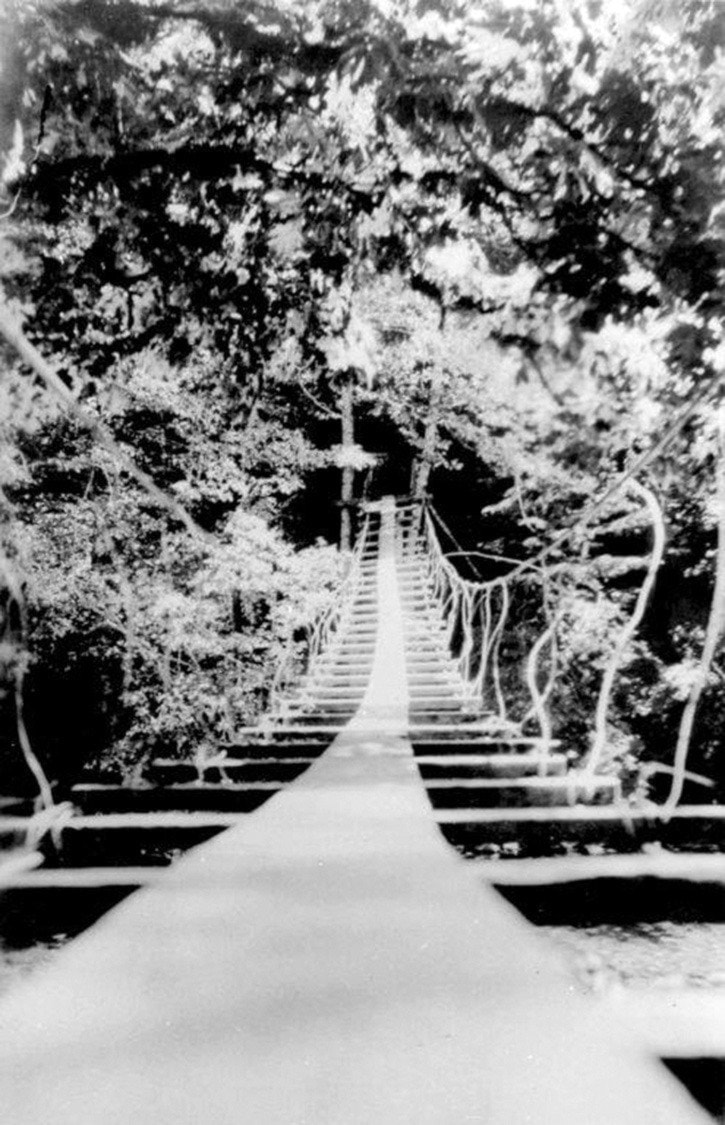If this bridge, built in 1927, looks a bit challenging to cross, yes perhaps it was. The cables supporting the planking and narrow deck were strung across the Sooke River, just a bit south of the Sooke Potholes Park. It was built by Icelander Byron Johnson to permit access from Sooke River Road to his family’s isolated home on the west side, which could not be reached by road.
The world we live in today seems to require a great deal of caution in order that school children are protected from all the hazards that may be out there. It was not always thus. I recall hearing about a schoolgirl in East Sooke (a daughter in the Brown family) who shot a cougar on her walk to school in the morning.
My own class excursion about 70 years ago, when I was in Grade 8 at Sooke School, would give pause, I think, to parents and school officials today. Our Grade 8 class was to have a treat, to go on a hike up the Sooke River. Our principal felt that I was probably more familiar with the terrain than he, so at the age of 13 or 14, I was appointed to lead the expedition. (Little did he know!)
All of us on foot, we headed up Phillips Road, passing the Phillips farm and the baying cougar hounds, and reached the Sheilds farm, where our challenge was to skirt the fields where the bull was fenced in, and find our way beyond. Fortunately we navigated our way through the woods, admiring the profusion of wildflowers around us, and reached the yard of the Johnson cabin.
Next step was to find the bridge abutment and climb; at this height, one could look out and down at the rickety appearing contraption, take a deep breath, grasp the cables and step forward onto the narrow walkway, trying not to look at the rushing river below. Each step would cause the bridge to sway, so best not to be vulnerable to seasickness. No wonder we called it “the Swinging Bridge.”
Everyone got across safely and then there was the long walk back down Sooke River Road to bring us to Milne’s Landing and civilization, and then home. Footsore and weary we were in the gathering dusk, but hopefully everyone else carried with them a not-to-be- forgotten memory, as did I. I’m sure the principal’s biggest feeling, however, was great relief that all his charges got home safe and sound.
•••
Elida Peers is the historian of Sooke Region Museum.
